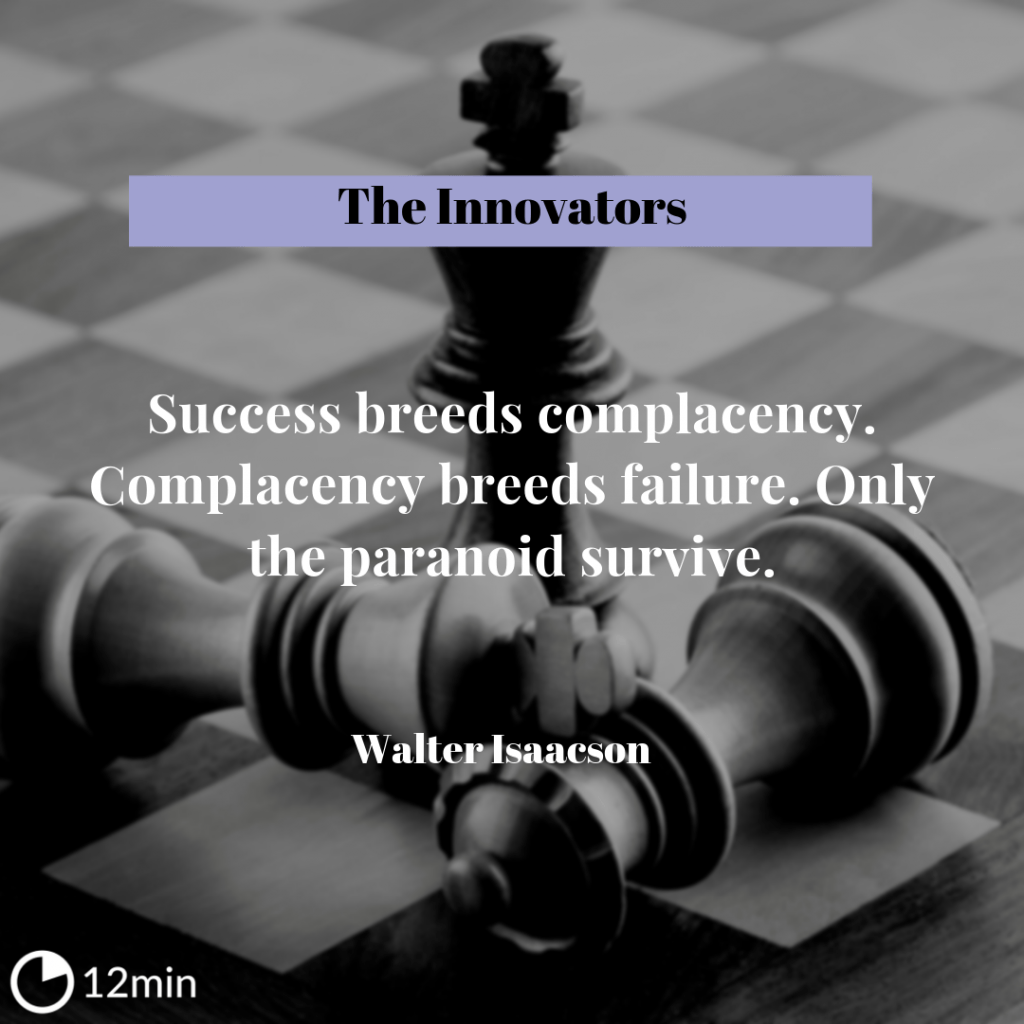The Innovators Summary
2 min read ⌚
Many are unaware that the digital revolution started well before the first computer was created. The journey began in 1843 with the collaboration of Charles Babbage and Ada Lovelace. With each new decade, different innovations emerged and were developing until culminating in the creation of the computer and the internet.
In Innovators, the author introduces us to the great inventors who contributed to the birth of modern technology. We also discovered that men were not solely responsible for the invention of computers.
Many women participated directly and even were the first to program computers.
Innovators tell the story of the people who created computers and the internet. It is a guide on innovation and presents the history of the digital revolution. This is the story of how the minds of great creators worked and what made them so creative.
The beginning of the digital revolution
The Countess Ada Lovelace was the daughter of the poet Lord Byron and his wife, Anne. Her life was a constant mixture of mathematics and art, a combination that allowed her to have ideas and think of possibilities far ahead of her time. She began collaborating with mathematical scientist Charles Babbage after being impressed by his ‘Machine of Difference,’ a machine he built to solve polynomial equations.

Ada believed in the new idea of Babbage, the Analytical Machine. He wanted to design a “computer” that could perform various tasks – not just one, like his previous machine. Ada was fascinated by the idea.
One of the features of the design that most pleased her was that she ran on punch cards, like the mechanical weaving machines she loved.
Babbage imagined that his Analytical Engine would be able to perform different operations and even do it alone. Taking an even bigger step, Ada developed the theory that the machine would be able to process not only numbers, but also poetry, musical notes, and artistic standards.
[blur]Babbage’s machine was described in French with a set of notes written by Luigi Menebrea and Ada translated them into English. This translation, to which she added her comments almost doubling the size of the original annotation, was published in a scientific journal in 1843. Ada’s version of Menabrea’s annotations became much more influential than the original version and provided for the functionality of future computers. The article had four concepts that would become very famous: the machine would have many purposes; would work on a sequence of operations; would be able to process anything translated into symbols and would never be able to think on her own. She also wrote what has been widely recognized as the first example of a computer program in the form of a diagram and a table explaining how to use punch cards. The Babbage machine was never built, but it was a functional idea that served as the basis for the digital revolution that followed. The knowledge about machines, combined with Ada’s artistic and mathematical imagination, produced an idea that proved quite prophetic.[/blur]Emir is the Head of Marketing at 12min. In his spare time, he loves to meditate and play soccer.






